This Fermented Radishes recipe is wonderful when radishes are abundant and you need a way to preserve them. Lacto fermented in a brine, these radishes should last in your fridge for several months so that you have them ready to add to tacos, salads, or sandwiches, or enjoy on their own.
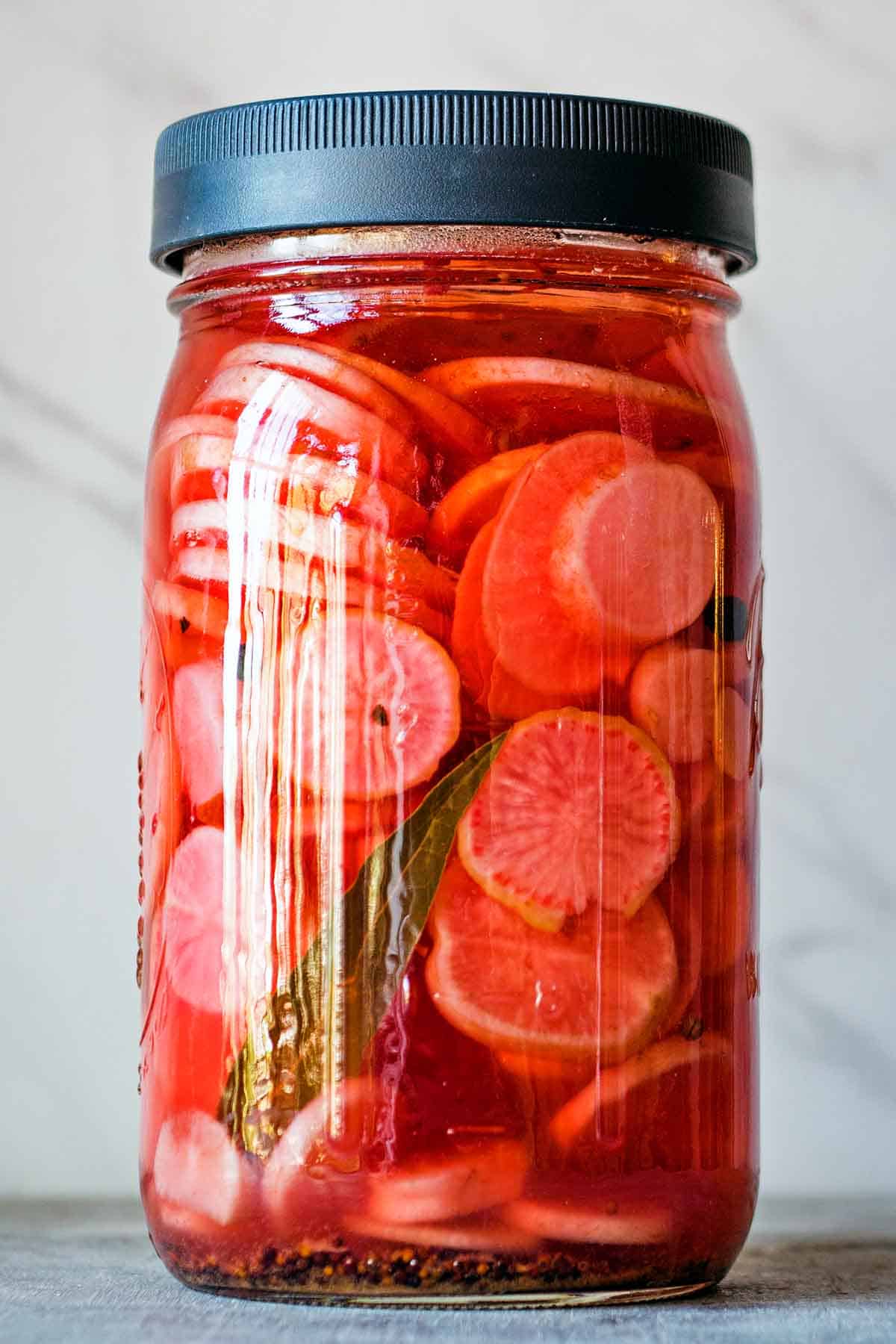
This fermented radish recipe is based on my Lacto-Fermented Cucumber recipe, which includes sliced cucumbers in a brine of water, salt, and other seasonings. Similar to that recipe, this fermented radish recipe includes salt, water, pickling spice, and garlic for savory, crunchy radish slices that are great served with bread, cheese, and cured meat for sandwiches or as part of a charcuterie board.
Ingredients & Substitutions
You will only need six ingredients to make these fermented radishes, with the most important being the salt, water, and radishes. Here is everything you will need to make this fermentation recipe.
- radishes - sliced
- pickling spice - store-bought or use my homemade mix of mustard, coriander, dill seeds, peppercorns, all spice, and cloves.
- bay leaves - grape leaves or oak leaves work too to keep the vegetables crunchy during fermentation
- garlic cloves - sliced (optional)
- filtered water
- sea salt - kosher salt, Celtic salt, or pink Himalayan salt (not iodized table salt)
See recipe card for quantities.
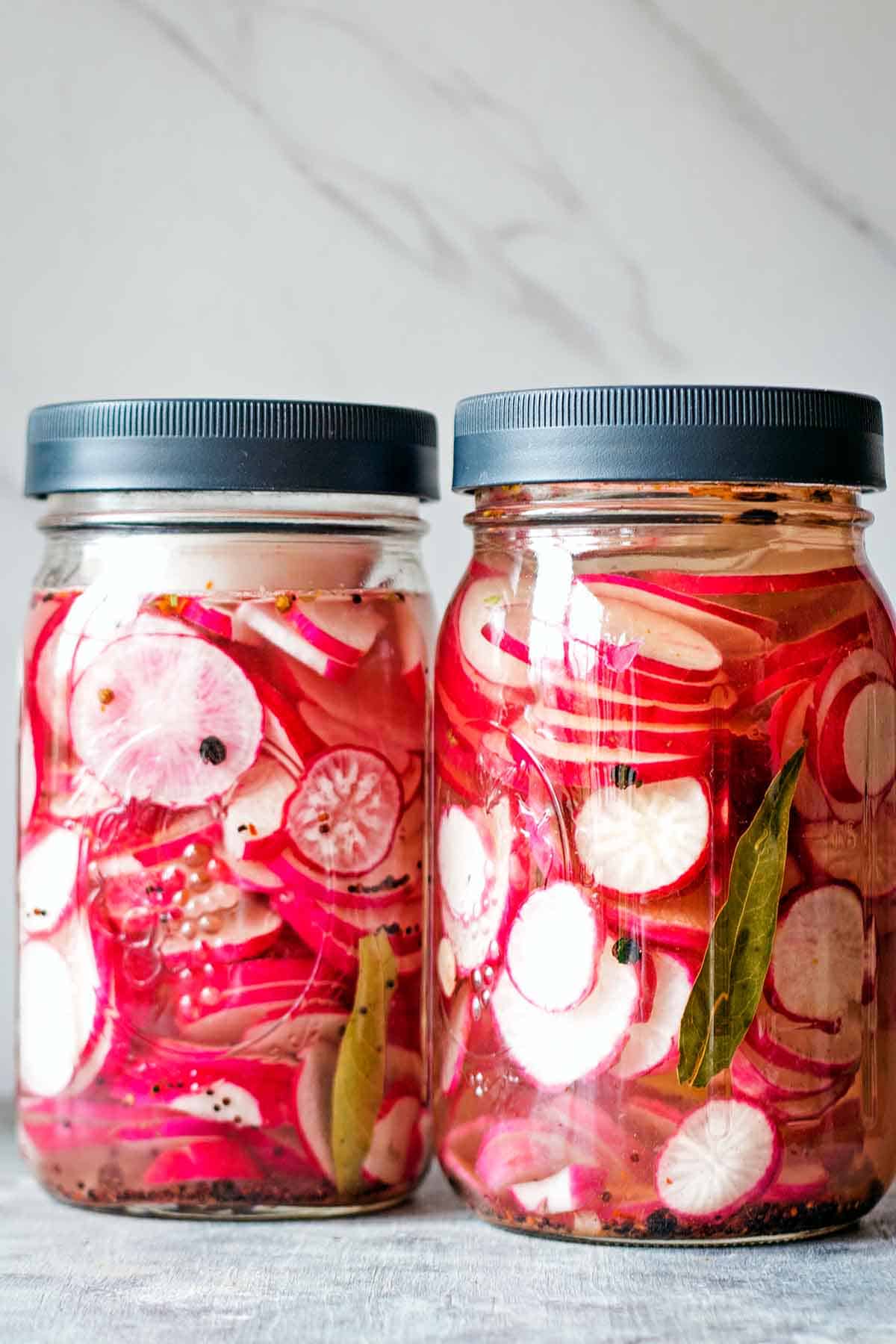
Instructions
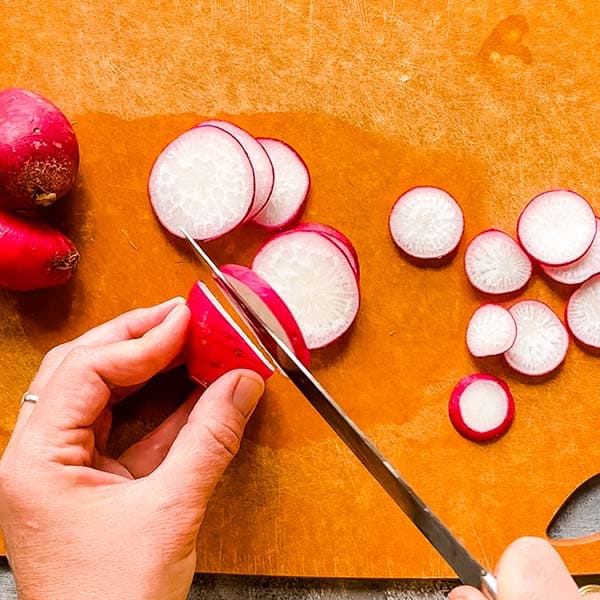
Wash the radishes and scrub them if needed. Slice into ⅛-inch thick slices.
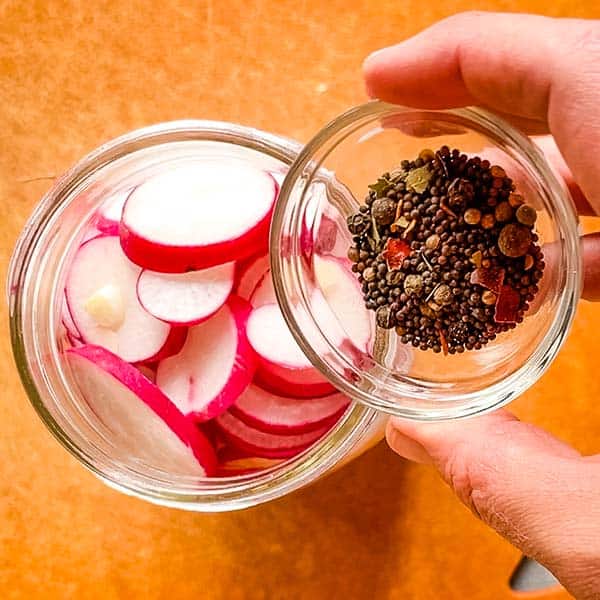
Layer the radishes in a sanitized quart jar alternating with the pickling spice, bay leaf, and garlic.
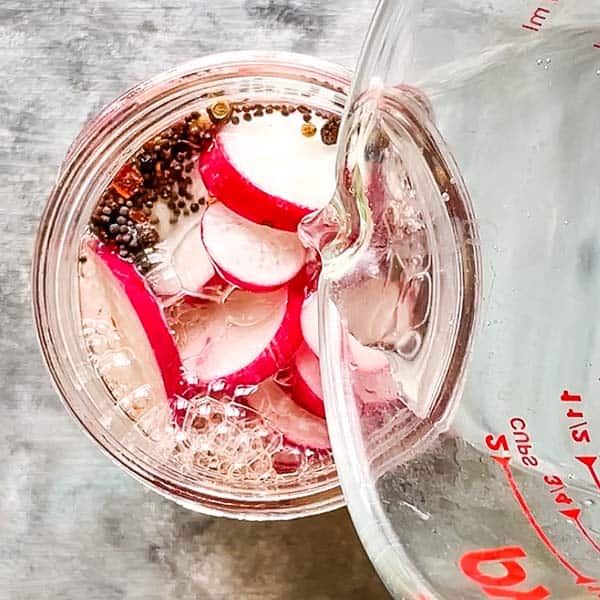
Stir the water with the salt until the salt is dissolved. Pour it over the radishes until the jar is full up to the threads (you may not need all of it).
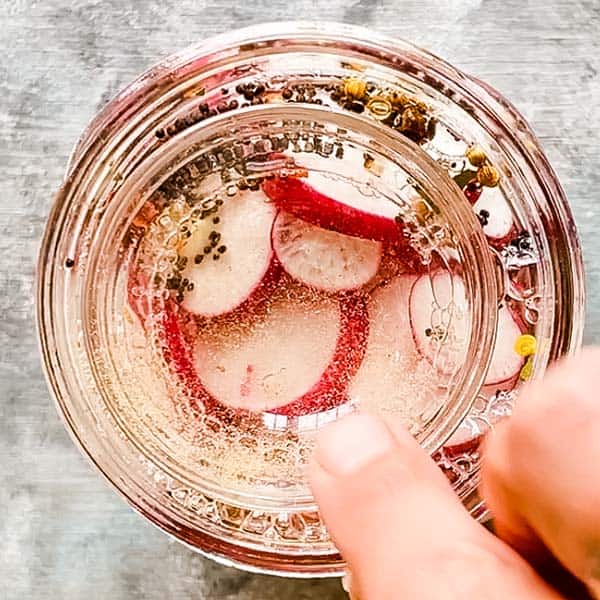
If the radishes float to the surface, add a fermentation weight to keep them under the brine.
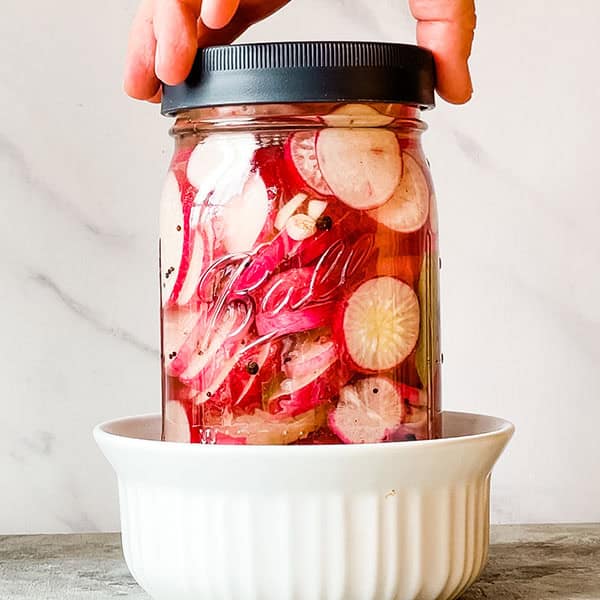
Close the jar tightly with a lid, place it on a rimmed plate or in a bowl, and allow it to ferment for 3 to 5 days.
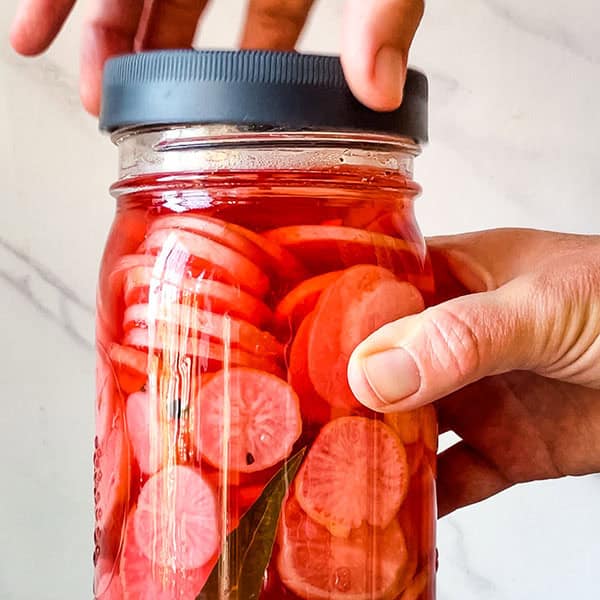
Open the jar daily to let the gas bubbles escape. The brine will go from clear, to bubbly to pink and slightly opaque as the radish skin will color the brine as well as the whites of the radish slices.
Once the fermented radishes have reached your desired tart flavor, move them to the fridge. They should last several months to a year unopened.
Hint: Since fermented foods build up gases during fermentation, it is important to open the jar each day to allow the gases to escape and prevent the jar from exploding.
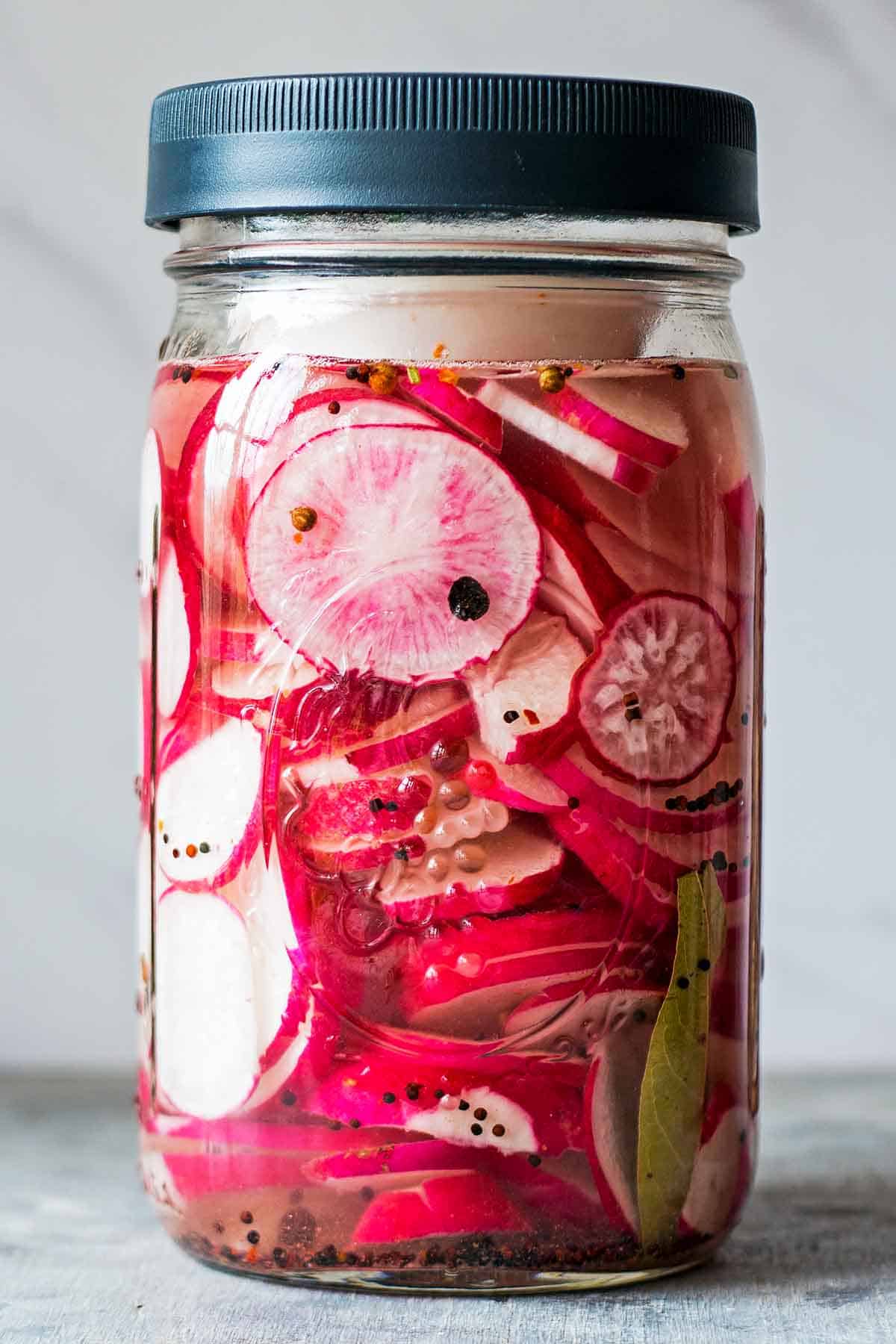
Variations
The beautiful part of many fermentation recipes is that they are easily adaptable to other ingredients. The main thing to remember is to maintain the correct ratio of salt to water as that is crucial to fermentation happening correctly. Here are some ways you can change this fermented radish recipe.
- Make Fermented Watermelon Radishes - Rather than using standard red radishes from your garden or farmer's market, you can use watermelon radishes, which are spicy and bright pink in the middle.
- Cut the Radishes Differently - If you prefer a chunkier consistency, you can cut your radishes into cubes or slice them in half.
- Add Fresh Herbs - A few fresh herbs like fresh thyme leaves, chopped rosemary, or chopped oregano, are all wonderful options in this recipe if you looking for more of an herbal note.
- Make the Fermented Radishes Spicy - In addition to the pickling spice, you can add some fiery crushed red pepper flakes or gochugaru into the ferment. Gochugaru offers a fruity heat and are a classic in radish kimchi.
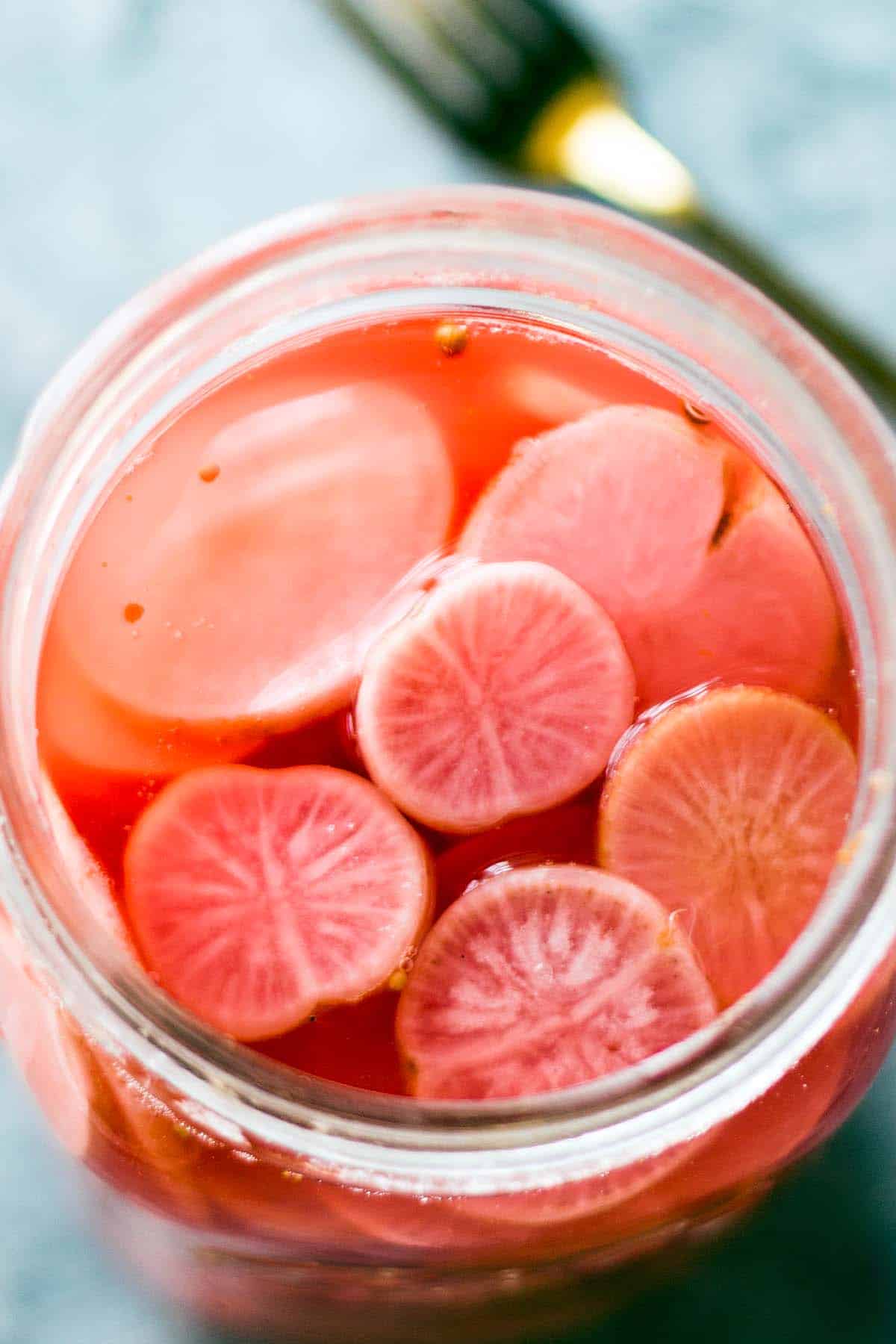
Storage
These fermented radishes should keep in the fridge for several months or even up to a year. The lacto fermentation process leads to lactobacillus bacteria consuming the oxygen in the brine, creating an anaerobic environment that slows down the breakdown of the radishes. As a result, as you store your ferment in the fridge, you will want to make sure you ensure the radish slices are consistently under the brine so they stay crunchy.
As you consume the radishes in the jar, it is a good idea to downsize the radishes in a smaller jar, too, as extra headspace may cause the radishes to deteriorate faster.

Top tip
Make sure you use sea salt rather than salt with anti-caking agents in it. This is because added ingredients in the salt can inhibit the fermentation process.
FAQ
Yes, it is! Fresh radishes are highly nutritious and a good source of fiber. Additionally, the fermentation process improves the bioavailability of those nutrients, making them even healthier. Additionally, fermented foods contain a mixture of bacteria and yeasts that are good to improve gut health.
No, they aren't quite the same thing. Pickling foods involves placing them in an acidic brine with vinegar as the base so that it imparts a sour flavour. Meanwhile, fermenting doesn't include any vinegar and the acidification happens during the process of fermentation.
You will know that your radish pickles are fermented in a few ways. Throughout fermentation, you should notice some bubbling in the brine that will show you that the fermentation process is happening. Once the ferment smells sour and the radishes have a tangy, pickly flavour, you will know they are done.
The radishes should only need 3 to 5 days to ferment. However, if you would like them to be extra sour, you can let them ferment longer.
Yes, you definitely can! If you find you are a little short on radishes or have some other vegetables to use up, you can add them into this recipe. Carrots, cauliflower, beets, onion, sweet or hot peppers, and cabbage all work well as fermented vegetables.
Fermented radishes are crunchy, salty, spicy, and sour, making them excellent additions to a charcuterie board. This recipe is particularly delicious because it includes pickling spice with the taste of mustard seeds, peppercorns, coriander, dill, and cloves.
Radishes and other fermented vegetables should always be fermented at room temperature. The bacteria need a certain temperature (ideally 15-25°C) to complete the fermentation process. However, once the radishes have fermented to your liking, you can place them in the fridge. This will slow down the fermentation process and ensure they don't become too sour.
Yes, if you don't have a jar, you can ferment the radishes in another vessel if needed. You can use a fermentation crock, which is especially good if you want to make a larger batch. Alternatively, you can even ferment the radishes in a glass bowl if that is all you have. Simply cover it with plastic wrap or a tea towel fastened with a large elastic band.
Related
Looking for other recipes like this? Try these:
Recipe
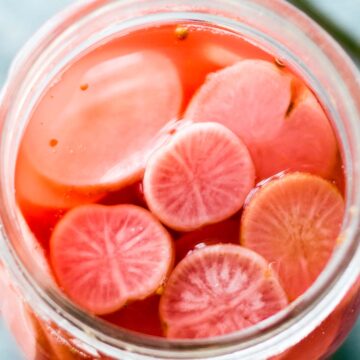
Fermented Radishes Recipe
Equipment
- 1 quart sized glass jar with lid thoroughly washed with hot water
- fermentation weight or tiny bowl
Ingredients
- 1 pound radishes sliced
- ½-1 tablespoon pickling spice mix of mustard, coriander, dill seeds, peppercorns, all spice, cloves...
- 2 bay leaves grape leaves or oak leaves
- 1-3 garlic cloves sliced (optional)
- 2 cups filtered water
- 3-4 teaspoons sea salt for brine of about 3.5 - 4.5% salinity
Instructions
- Start by washing out your glass jar and stirring tools with hot water.
- Wash the radishes and give them a light scrub if necessary. Cut them into ⅛-inch (3 mm) thin slices.1 pound radishes
- Pack the radish slices tightly into the jar while layering with the pickling spices, dill, bay leaves, and garlic.½-1 tablespoon pickling spice, 2 bay leaves, 1-3 garlic cloves
- Stir together the water and sea salt until the salt is mostly dissolved. Pour the salt water brine over the radishes all the way to the threaded neck. You may not need all of it.2 cups filtered water, 3-4 teaspoons sea salt
- If the radishes are floating up over the brine, place a fermentation weight or small bowl on top to keep them submerged.
- Close the jar tightly and place on a rimmed plate or bowl on your shelf or counter for 3-5 days. I like to open the jar daily to let gas bubbles escape.
- The brine will go from clear, to bubbly to pink and slightly opaque as the radish skin will color the brines as well as the whites of the radish slices. Once the fermented radishes have reached your desired sour flavor, move them to the fridge. There they can last several months to a year unopened. Once opened, I prefer to use up the fermented radishes within 1 month.
Notes
Nutrition
Pin for later:
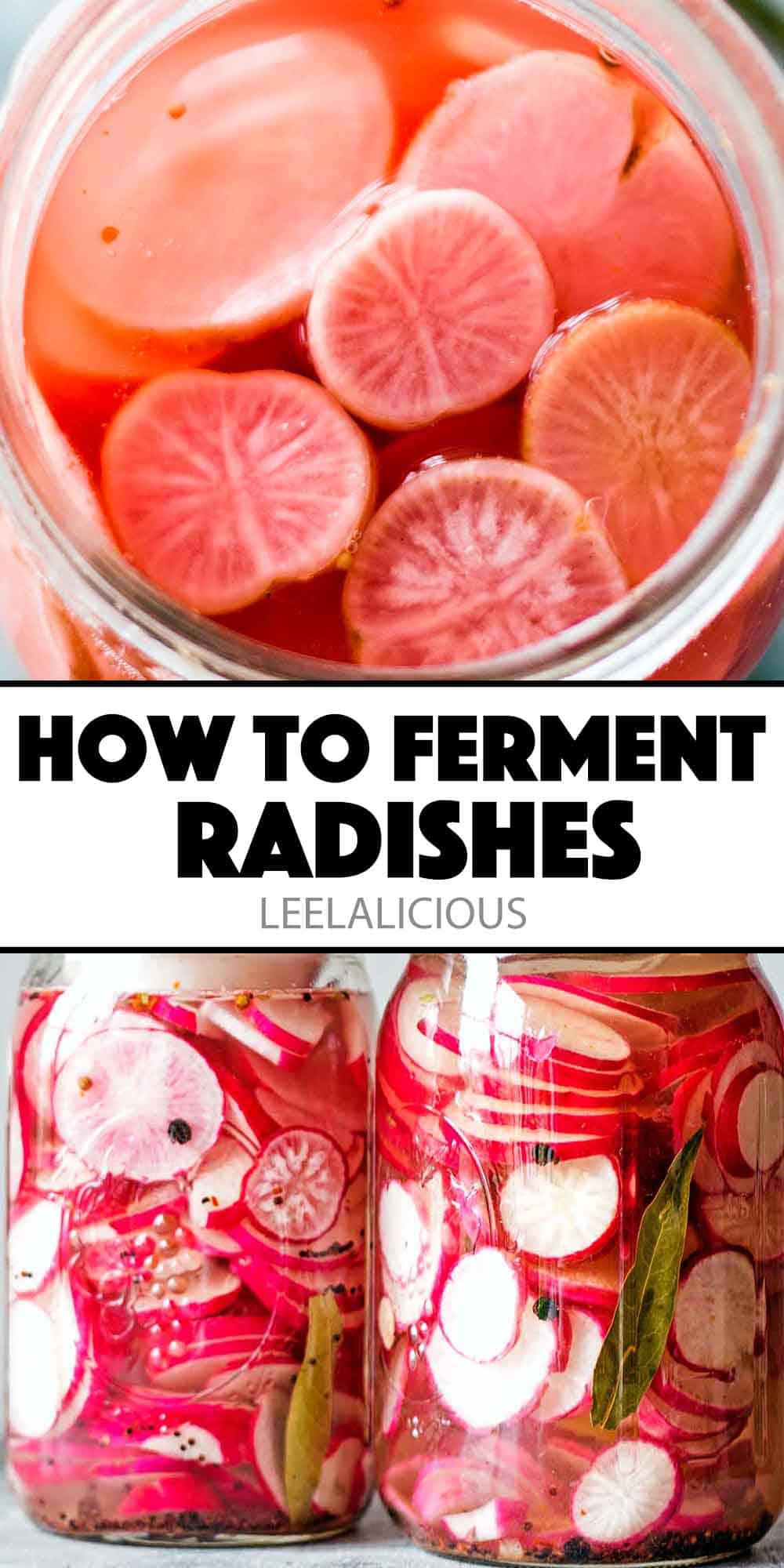



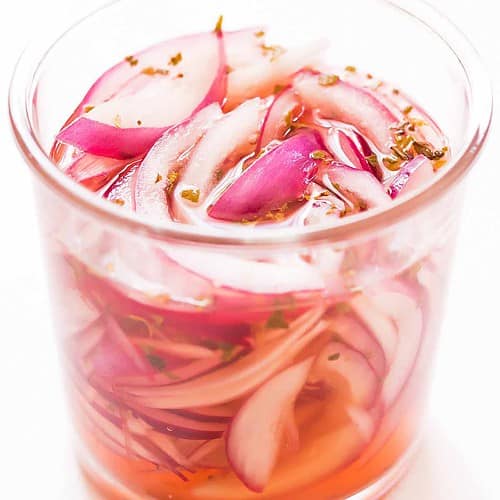
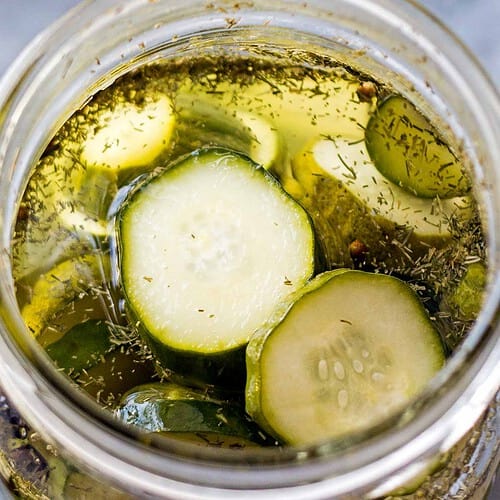
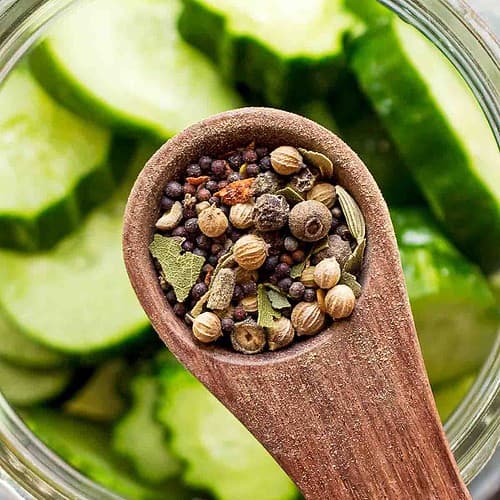
Leave a Reply